Abstract
We have examined the interrelationships among transpulmonary pressure, flow, and volume during exhausting exercise in 10 normal adult males. Expiratory transpulmonary pressures during exercise were compared with flow-limiting pressures measured at rest by two techniques. In no case did pressures developed during exercise exceed to an appreciable extent the flow-limiting pressures. This indicates that, during near-maximal exercise, ventilation remains efficient as judged in terms of the pressure-volume relationships of the lung. The mechanical properties of the lung do not appear to limit ventilation during exhausting exercise in normal subjects. We could find no relationship between the magnitude of transpulmonary pressure and exercise limitation. There was no evidence that lung mechanics changed during exhausting exercise in normal subjects. The two methods for estimating expiratory flow-limiting pressures, the orifice technique and the isovolume pressure-flow method, gave similar results.
Full text
PDF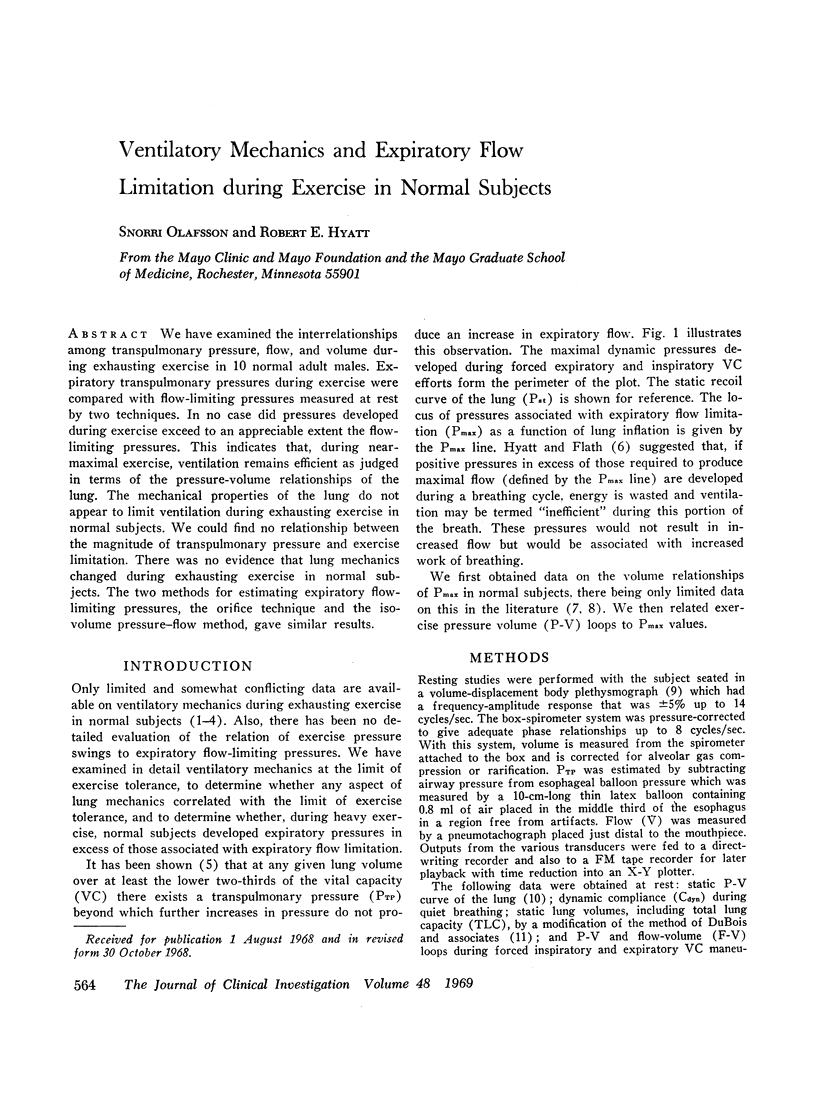
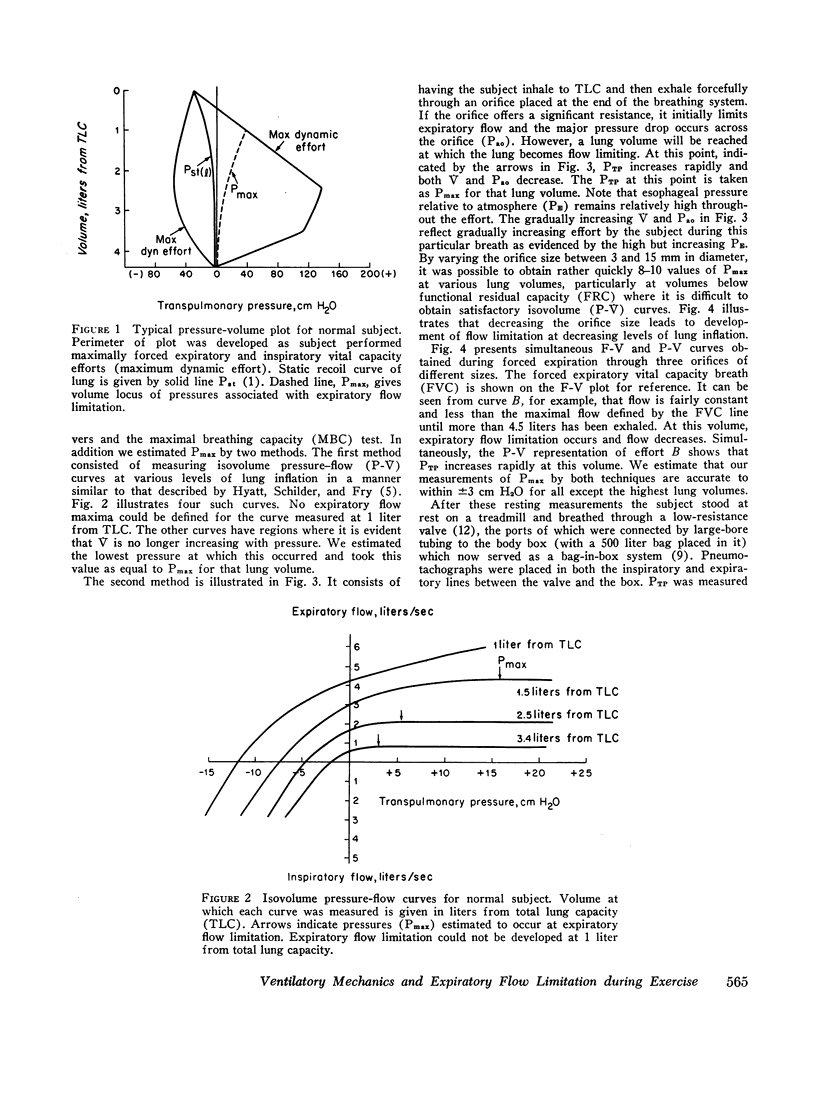
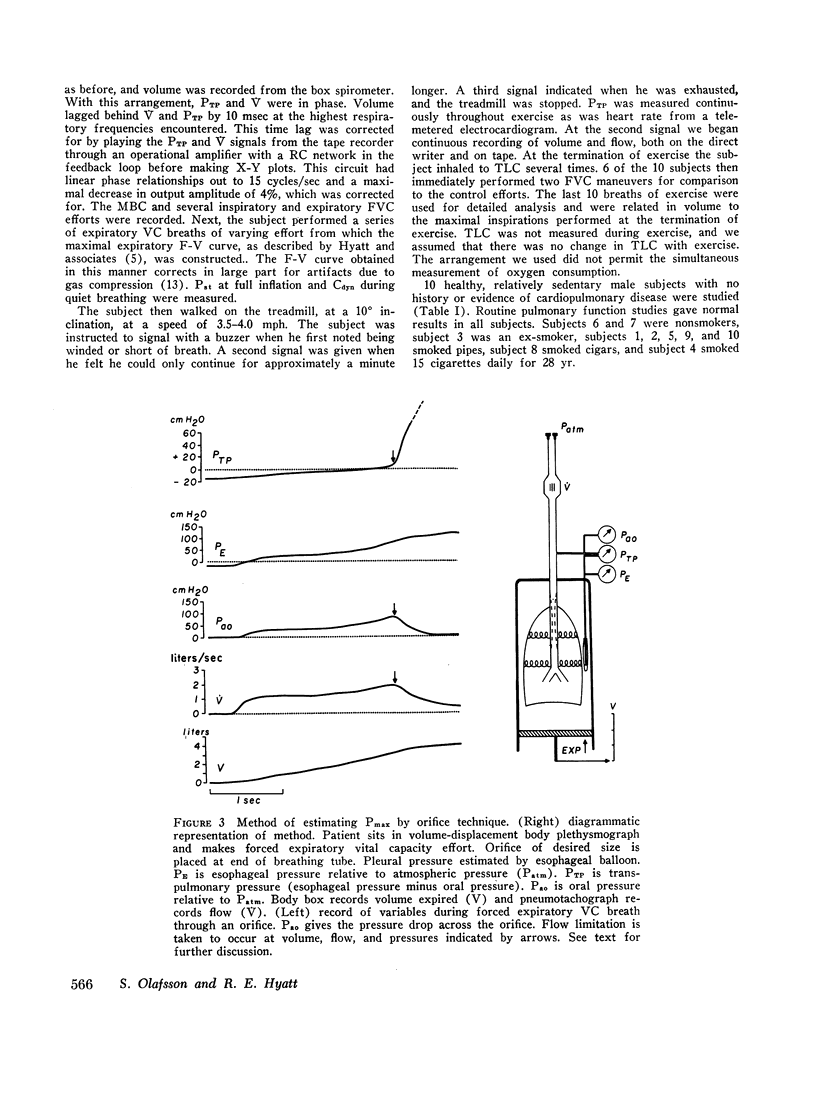
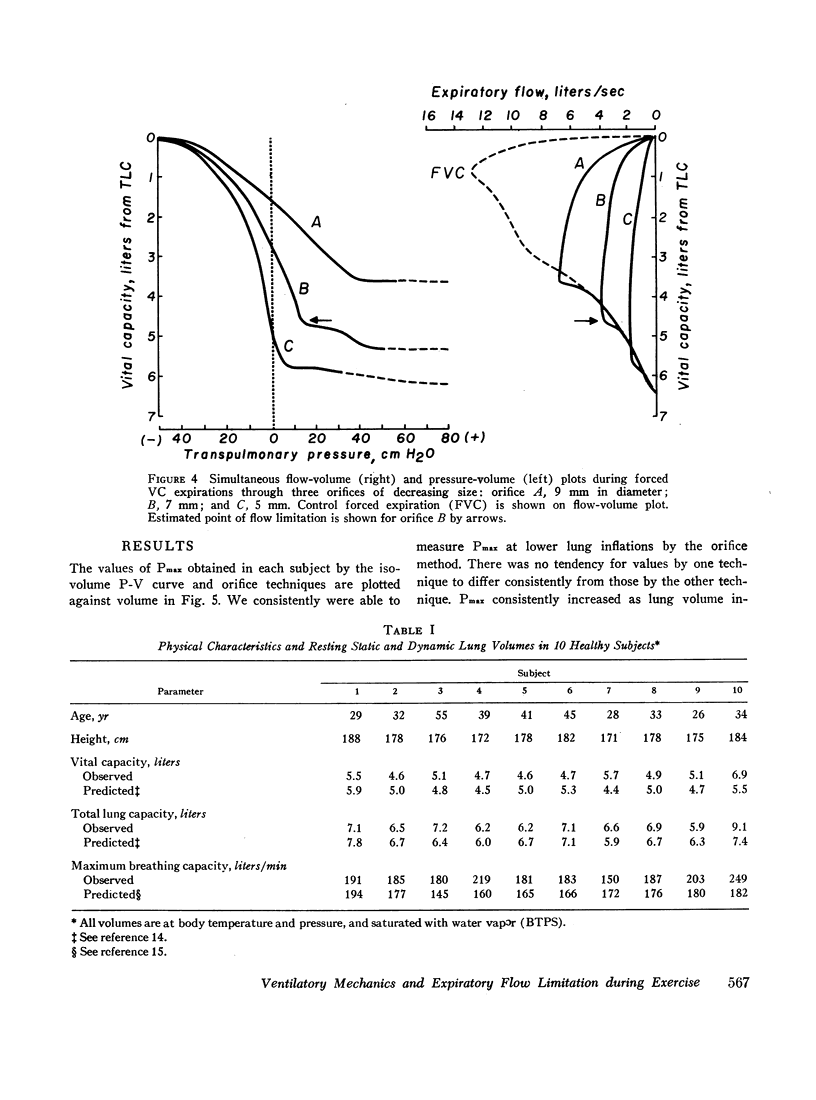
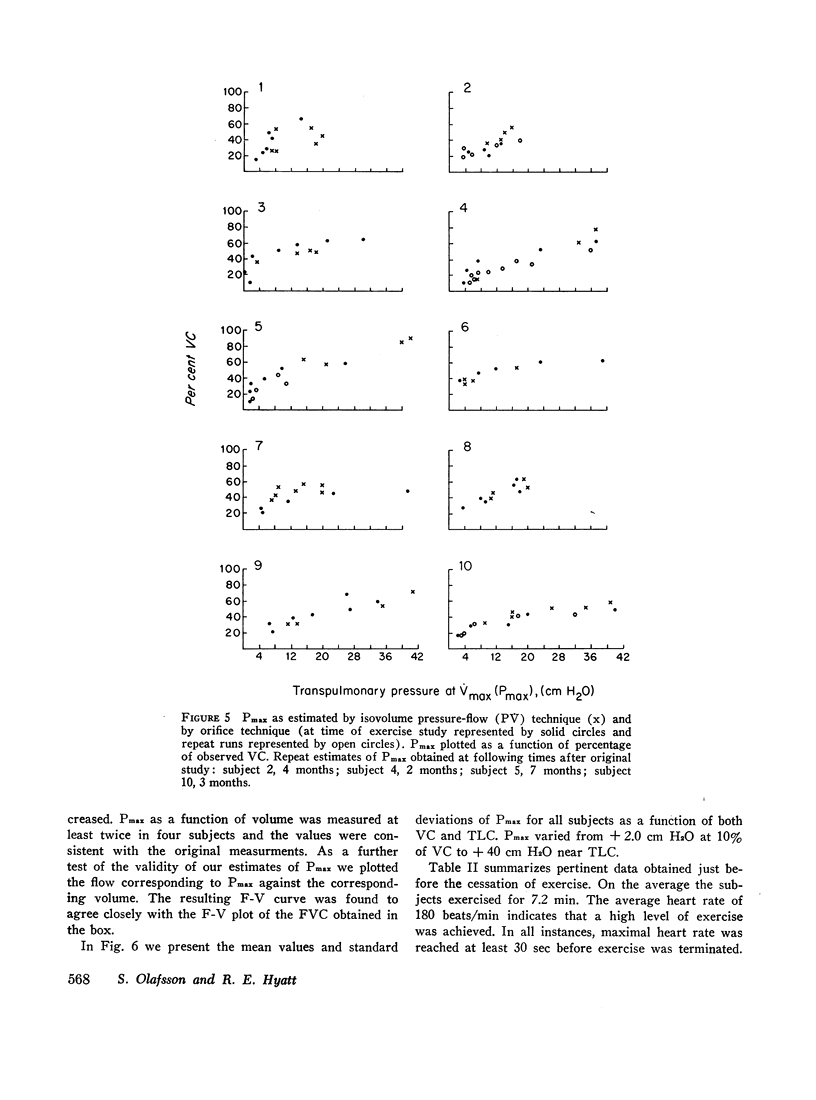
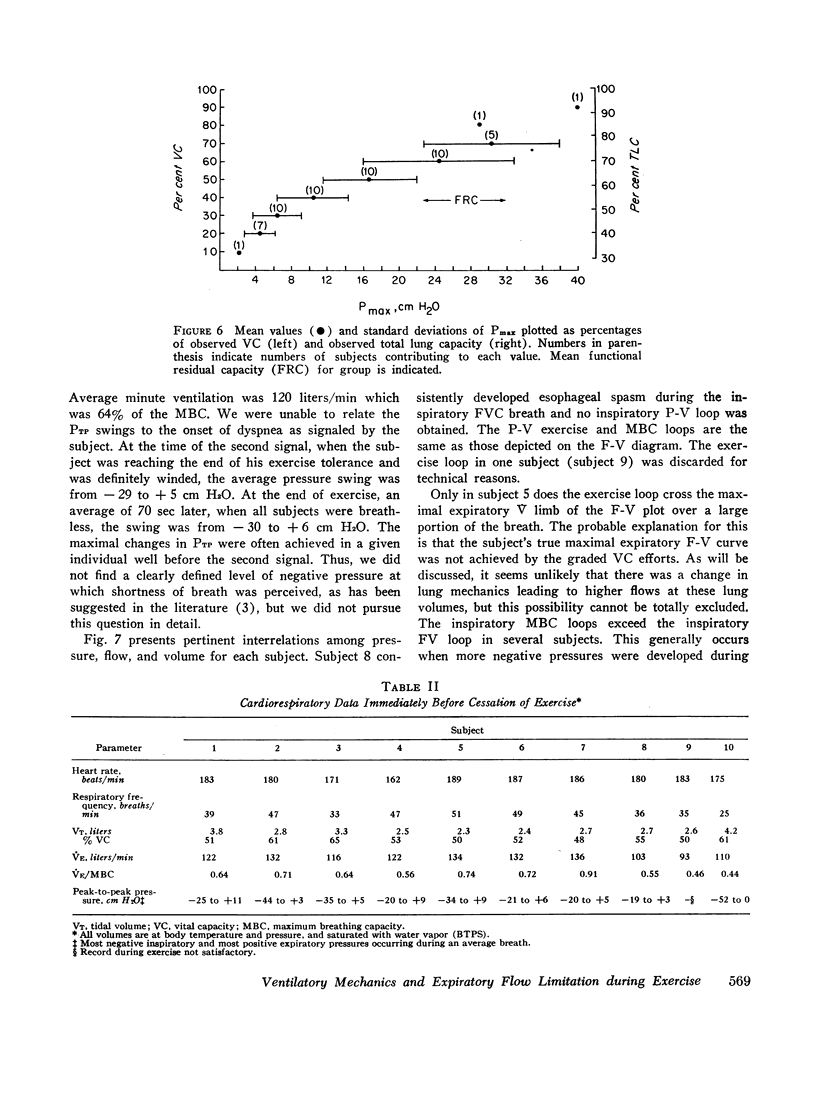
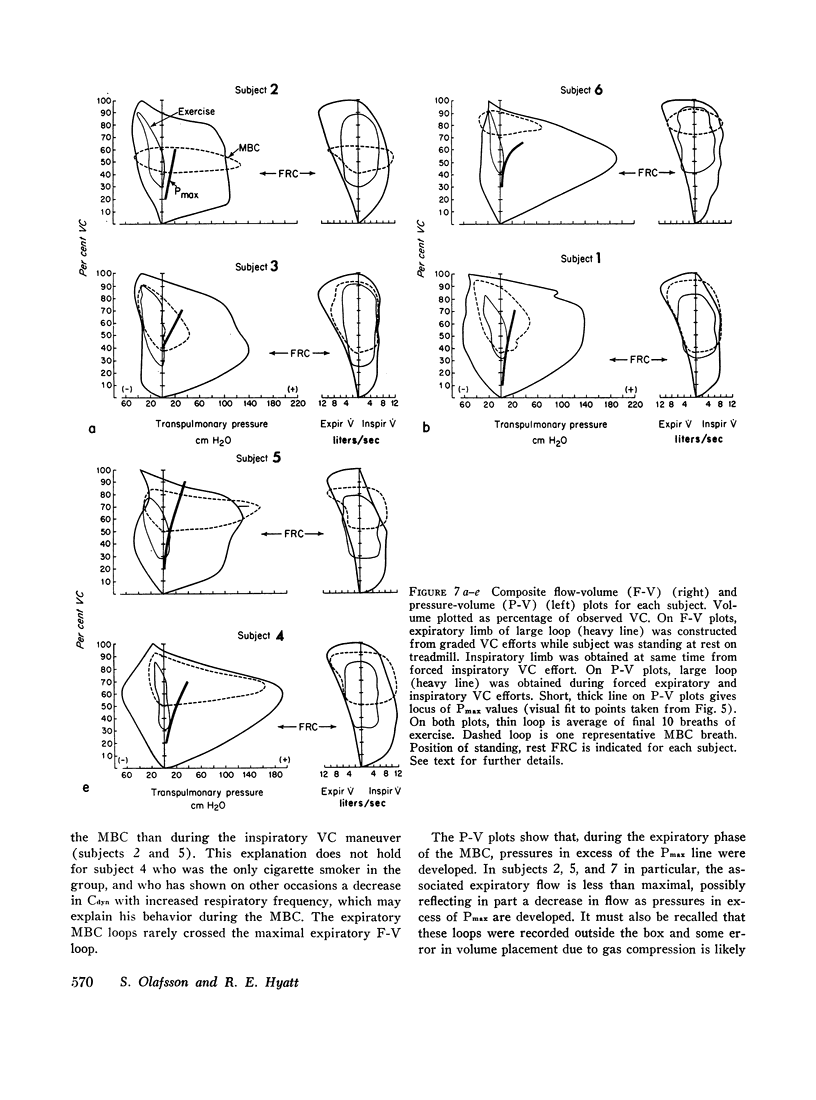
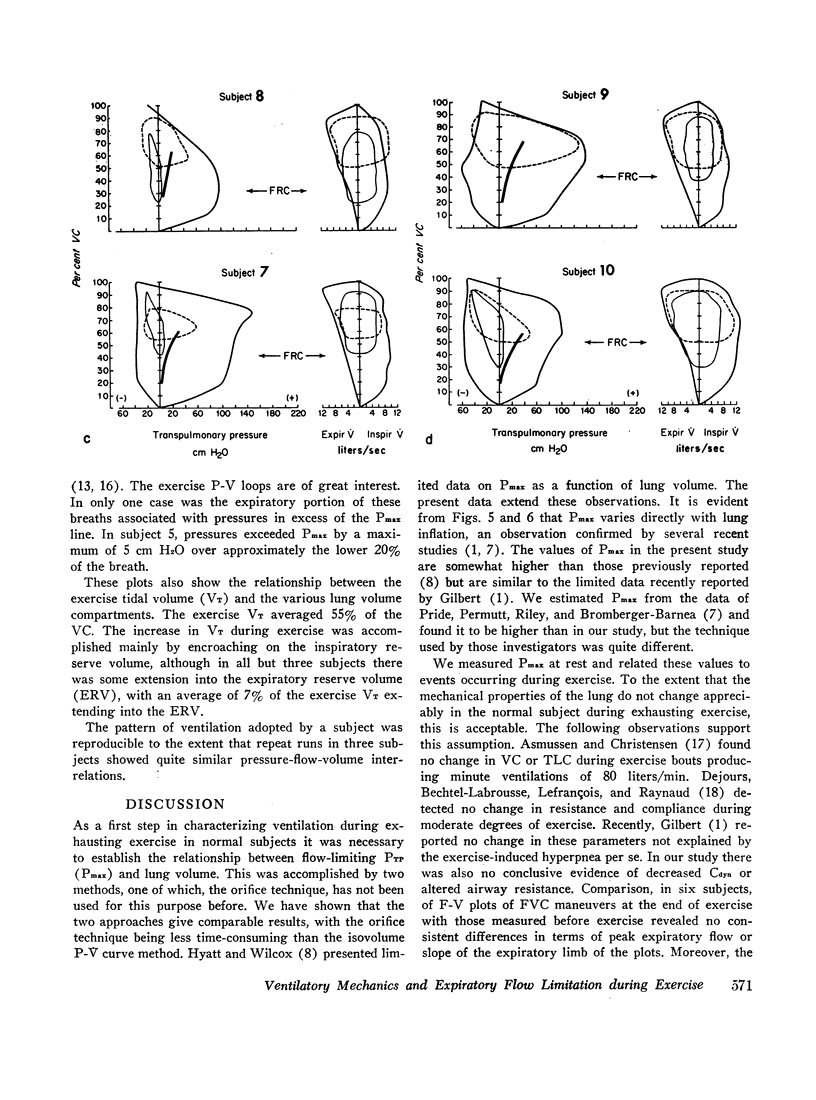
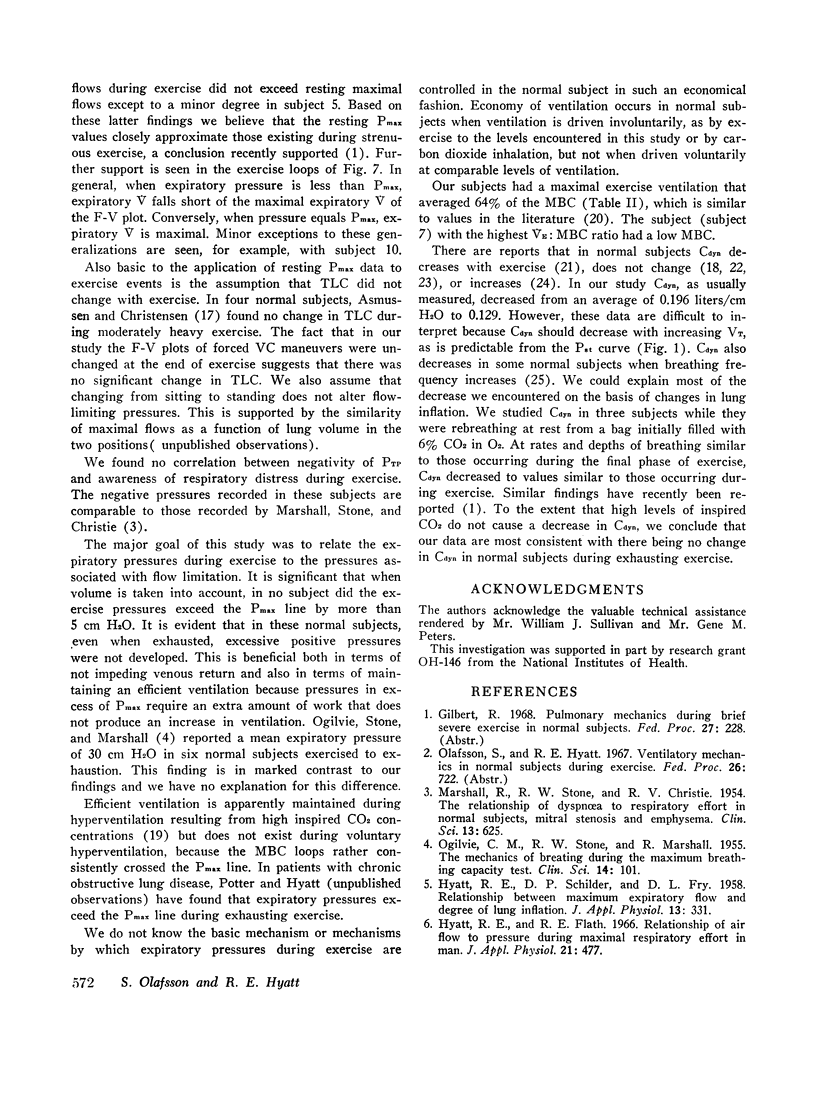

Selected References
These references are in PubMed. This may not be the complete list of references from this article.
- BATEMAN J. B. Studies of lung capacities and intrapulmonary mixing: normal lung capacities. J Appl Physiol. 1950 Sep;3(3):133–142. doi: 10.1152/jappl.1950.3.3.133. [DOI] [PubMed] [Google Scholar]
- DEJOURS P., BECHTEL-LABROUSSE Y., LEFRANCOIS R., RAYNAUD J. [Study of ventilatory mechanics during muscular exercise]. J Physiol (Paris) 1961 Mar-Apr;53:318–319. [PubMed] [Google Scholar]
- DUBOIS A. B., BOTELHO S. Y., BEDELL G. N., MARSHALL R., COMROE J. H., Jr A rapid plethysmographic method for measuring thoracic gas volume: a comparison with a nitrogen washout method for measuring functional residual capacity in normal subjects. J Clin Invest. 1956 Mar;35(3):322–326. doi: 10.1172/JCI103281. [DOI] [PMC free article] [PubMed] [Google Scholar]
- GRANATH A., HORIE E., LINDERHOLM H. Compliance and resistance of the lungs in the sitting and supine positions at rest and during work. Scand J Clin Lab Invest. 1959;11:226–234. doi: 10.3109/00365515909060441. [DOI] [PubMed] [Google Scholar]
- HYATT R. E., SCHILDER D. P., FRY D. L. Relationship between maximum expiratory flow and degree of lung inflation. J Appl Physiol. 1958 Nov;13(3):331–336. doi: 10.1152/jappl.1958.13.3.331. [DOI] [PubMed] [Google Scholar]
- HYATT R. E., WILCOX R. E. The pressure-flow relationships of the intrathoracic airway in man. J Clin Invest. 1963 Jan;42:29–39. doi: 10.1172/JCI104693. [DOI] [PMC free article] [PubMed] [Google Scholar]
- Hanson J. S., Tabakin B. S., Levy A. M., Falsetti H. L. Alterations in pulmonary mechanics with airway obstruction during rest and exercise. J Appl Physiol. 1965 Jul;20(4):664–668. doi: 10.1152/jappl.1965.20.4.664. [DOI] [PubMed] [Google Scholar]
- Hyatt R. E., Flath R. E. Relationship of air flow to pressure during maximal respiratory effort in man. J Appl Physiol. 1966 Mar;21(2):477–482. doi: 10.1152/jappl.1966.21.2.477. [DOI] [PubMed] [Google Scholar]
- Ingram R. H., Jr, Schilder D. P. Effect of gas compression on pulmonary pressure, flow, and volume relationship. J Appl Physiol. 1966 Nov;21(6):1821–1826. doi: 10.1152/jappl.1966.21.6.1821. [DOI] [PubMed] [Google Scholar]
- KORY R. C., CALLAHAN R., BOREN H. G., SYNER J. C. The Veterans Administration-Army cooperative study of pulmonary function. I. Clinical spirometry in normal men. Am J Med. 1961 Feb;30:243–258. doi: 10.1016/0002-9343(61)90096-1. [DOI] [PubMed] [Google Scholar]
- MARSHALL R., STONE R. W., CHRISTIE R. V. The relationship of dyspnoea to respiratory effort in normal subjects, mitral stenosis and emphysema. Clin Sci. 1954 Nov;13(4):625–631. [PubMed] [Google Scholar]
- MCKERROW C. B., OTIS A. B. Oxygen cost of hyperventilation. J Appl Physiol. 1956 Nov;9(3):375–379. doi: 10.1152/jappl.1956.9.3.375. [DOI] [PubMed] [Google Scholar]
- MILIC-EMILI G., PETIT J. M., DEROANNE R. Mechanical work of breathing during exercise in trained and untrained subjects. J Appl Physiol. 1962 Jan;17:43–46. doi: 10.1152/jappl.1962.17.1.43. [DOI] [PubMed] [Google Scholar]
- MILLS R. J., CUMMING G., HARRIS P. FREQUENCY-DEPENDENT COMPLIANCE AT DIFFERENT LEVELS OF INSPIRATION IN NORMAL ADULTS. J Appl Physiol. 1963 Nov;18:1061–1064. doi: 10.1152/jappl.1963.18.6.1061. [DOI] [PubMed] [Google Scholar]
- McILROY M. B., MARSHALL R., CHRISTIE R. V. The work of breathing in normal subjects. Clin Sci. 1954 Feb;13(1):127–136. [PubMed] [Google Scholar]
- OGILVIE C. M., STONE R. W., MARSHALL R. The mechanics of breathing during the maximum breathing capacity test. Clin Sci. 1955 Feb;14(1):101–107. [PubMed] [Google Scholar]
- Pride N. B., Permutt S., Riley R. L., Bromberger-Barnea B. Determinants of maximal expiratory flow from the lungs. J Appl Physiol. 1967 Nov;23(5):646–662. doi: 10.1152/jappl.1967.23.5.646. [DOI] [PubMed] [Google Scholar]
- STEAD W. W., FRY D. L., EBERT R. V. The elastic properties of the lung in normal men and in patients with chronic pulmonary emphysema. J Lab Clin Med. 1952 Nov;40(5):674–681. [PubMed] [Google Scholar]


